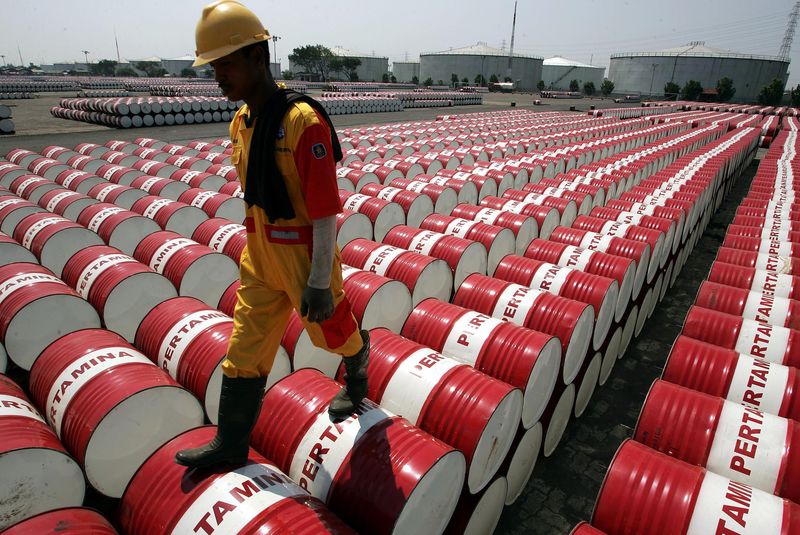Investing.com - Crude prices gained in Asia on Wednesday as industry estimates of US inventories showed a sharp draw last week that lifted sentiment.
On the New York Mercantile Exchange crude futures for February delivery rose 0.84% to $63.49 a barrel, while on London's Intercontinental Exchange, Brent gained 0.03% to $69.19 a barrel.
Crude oil stocks fell by 11.190 million barrels last week, the American Petroleum Institute (API) said in its estimates on Tuesday, more than expected as gasoline inventories rose by 4.338 million barrels and distillate stocks gained 4.685 million barrels.
Analysts estimated that crude stocks fell by 3.89 million barrels, while distillate inventories rose by 1.464 million barrels and gasoline stocks gained by 2.652 million barrels.
Supplies at the oil storage hub of Cushing, Oklahoma dipped by 2.516 million barrels.
On Wednesday, the Energy Information Administration will release official figures. Elsewhere, consumer prices rose 0.3% in China on month and at a 1.8% on year, official data showed Wednesday, below the expected 0.4% and 1.9% gains seen respectively.
Overnight, crude oil prices settled higher on Tuesday as ongoing optimism over OPEC-led production cuts offset fears US output could surge above a 47-year high.
US crude oil production is expected to rise by 780,000 barrels per day (bpd) to 10.3 million (bpd) in 2018, nearly 1 million bpd more than in 2017, the Energy Information Administration (EIA) forecast Tuesday, surpassing its previous record of 9.63 million barrels in 1970. For 2019, the EIA said it expects US oil production will average 10.85 million bpd.
In the wake of OPEC-led production cuts, non-Opec members led by the U.S. have ramped up production, stoking fears of a slowdown in rebalancing of oil markets amid excess global supplies.
"Led by U.S. production, particularly in the Permian Basin, and new oil sands projects in Canada, non-OPEC production is forecast to continue growing through the end of 2019," EIA acting Administrator John Conti said in a statement.
OPEC in November agreed to extend 1.2 million bpd output cuts through 2018 to rid the market of excess supplies in an effort to ensure global inventories revert to their five-year average.
